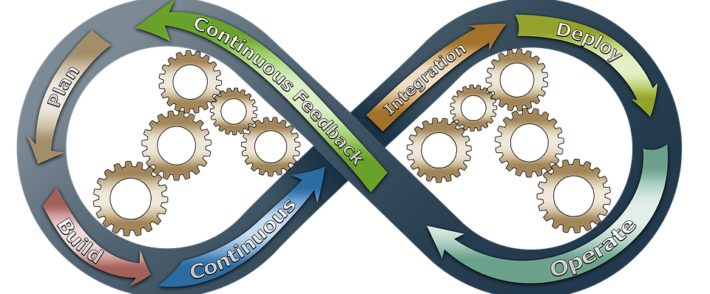A continuous process Improvement management approach helps to improve your internal processes. Your business although a stand-alone entity does not operate in isolation. It exists and functions as a multi-layered, continuously interacting system.
To improve your internal processes requires an approach which uses the input and output streams of the continuous process improvement management system.
Business owners’ approach this in two different ways. Some state that “We already have an established way of doing things which we think works for us”.
The other approach may come from a business that has taken a strategic decision to become more competitive in the marketplace, or whose customers may be driving the requirements for them to have a systems approach.
This may or may not necessarily be in the form of an ISO management system or even require ISO certification. Why?
Because any business can create a continuous process improvement management system or framework which allows them to be more efficient in meeting the needs of their customers, thereby cutting costs, and increasing revenue.
Continuous vs Continual Improvement – Any Difference?

“Continuous” defines an uninterrupted duration.
“Continual” defines duration occurring over a specific period with intervals of interruption.
Continual improvements apply to businesses conducting process improvements in stages, each separated by a period of time.
This is a requirement of an ISO Management System but small businesses who do not want to apply for ISO certification can still benefit from this simple strategy.
Continuous improvement requires that businesses are constantly driving process improvements by focusing on incremental improvement within existing processes.
ANY business can do this.
What Are Management Systems?
For any business to succeed, the workforce, physical assets, and processes must be interconnected into some type of system or systems that drive performance of product or service delivery.
The business environment generally consists of :
- Type of company entity,
- Location and physical environment,
- Customers,
- Non-customer community stakeholders
- Suppliers,
- Contractors and
- Regulatory agencies.
EACH component will provide different inputs to a business and also receive the company’s outputs either as a negative or positive impact.
Your business must continuously grow within this business environment – if it is to remain competitive.
To therefore grow and manage your business environment and its products or services requires clearly defined management systems. It is one thing to set up these systems in place, but it is more important to ensure that there is internal compliance through regular internal operational audits.
Continuous process Improvement Management – 3 PRIMARY SYSTEMS PROCESSES

- Core processes – inputs and outputs
- Key supporting processes – e.g. those for regulatory compliance, employee competency, provision of infrastructure, information communication and management, monitoring and analysis of key metrics.
- Management system supporting processes– document and record control, management of non-compliance and internal audits
The most challenging systems to manage without a formalized management system in any business are:
- Quality Management System (QMS)
- Environmental Management System (EMS) and
- Safety or Occupational Health & Safety Management Systems (SMS, OHSMS)
Quality Management System
A quality management system (QMS) is a formal system that documents processes, procedures, and responsibilities for achieving quality policies and objectives.
It helps coordinate and direct an organization’s activities to consistently meet customer and regulatory requirements and improve its effectiveness and efficiency on a continuous basis.
A QMS will help you transform your business into one that enhances customer satisfaction AND, it is NOT always built for ISO certification as some business owners think! Having a simple QMS and following it will make a huge difference to any business.
Safety Management System

A safety management system (SMS) is a continuous improvement process (integrated into everyday processes and activities) that consistently identifies and controls health and safety risks, reduces hazards and potential for incidents.
It protects the health and safety of your employees and contractors and helps to achieve regulatory compliance.
Investing in an SMS makes a measurable impact on your bottom line and can be viewed as a competitive advantage.
Contractor Safety Management helps to mitigate safety risks and reduce general liability and other potential costs that are associated with the use of contract workers including contractor selection, qualification, and performance.
Environmental Management System
An environmental management system (EMS) can be developed in compliance with the ISO 14001 standard OR NOT as part of your business strategy to implement environmental policy and address governmental regulations.
An EMS focuses resources on meeting the commitments identified in the company policy. It aligns processes, all focusing on providing the highest value to the customer.
The primary customer of the EMS is the environment (local, regional, and global) while the secondary customers may be the business owners or shareholders, customers, employees, stakeholders and government agencies.
Benefits Of Continuous Process Improvement Management to My Business?
BENEFITS OF QUALITY MANAGEMENT SYSTEMS
Implementing a quality management system affects every aspect of an organization’s performance. Major benefits of a documented quality management system include:

- Consistently meeting the customer’s requirements, which creates confidence in the organization. This leads to more customers, more sales, more repeat business, and more referrals.
- Consistently meeting the internal business requirements. This ensures regulatory compliance and delivery of products and services in the most efficient manner (cost and resources) allowing for growth, higher profit margins with expansion capabilities.
- Defining, improving, and controlling processes
- Preventing mistakes and reducing waste
- Identifying training opportunities
Benefits of an Environmental Management System
In addition to the tangible benefits of reduction of pollutant emissions and waste, the advantages of using an environmental management system include
- Financial benefits – quantitative cost savings or cost avoidance associated with any environmental source reduction
- Organizational reputation or improved relations with regulatory bodies, community organizations, or other stakeholders
- Qualitative and quantitative improvements to management support processes, such as employee training and awareness, compliance assurance processes, or corrective/preventative action programs
- Increased opportunities to acquire new customers
Benefits of a Safety Management System
Advantages include a safer workplace, improved employee morale, reduced costs, stakeholder confidence.

Typical Bottlenecks We Help You Avoid
Lack of Clarity
1. Not clearly defining the “Why” for creating your management system. What is your motive?
Is it quality and customer satisfaction, environmental responsibility, zero tolerance harm for safety, or, an integrated management of all 3 three?
Remember that without your customers, your business will not exist.
When businesses implement a management system because of external factors alone for a competitive advantage (e.g. a client demands a certified QMS or Safety program) it is difficult to get the best lasting results.
Commitment of senior management and engagement of employees with clearly defined roles and identification of process owners are major keys to success.
2. Striving to create the “Perfect Management System”
The perfect management system does not exist, but every management system can and should be improved over time. BCINC will work with you to design any management system that is practical for your business. The emphasis is on putting theory into practice.
3. Too many documents with too much detail
Efficiency is the key word. BCINC Canada will only create lean documents that formalize your critical processes for efficiency, proof of compliance with all laws and regulations (where required) and with adequate content.
Rigid Cookie Cutter System
4. Creating a rigid and inflexible management system
If your management system is too rigid it will make continuous improvement difficult to achieve. As a result, it may not guarantee the best results for the future.

Customer requirements and businesses are constantly changing and management systems must evolve along with them as well.
They must be improved over time to remain consistent with the changing circumstances of your business. This will improve your performance and enable you to seize new opportunities.
6. Using a “Cookie Cutter” template
Templates are a great resource, but no template can adequately define the uniqueness of your business as no two businesses are identical.
BCINC will work with you to create a management system or an integrated management system that will truly be efficient and reflective of your business – in line with your strategy and operations so that you can get the results you want.
The Solution – Create a Plan for Process Improvement Management
“ANY business can create a continuous process improvement management system or framework which allows them to be more efficient in meeting the needs of their customers, cutting costs and increasing revenue”
Schedule a NO OBLIGATION 30-minute Strategy Call to discuss how implementing continuous process improvement management and systems can benefit your business – CLICK below

